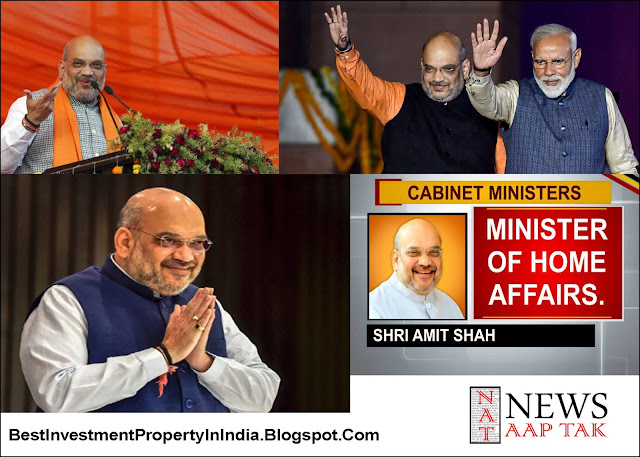Former Defence Minister Nirmala Sitharaman will be the new Finance Minister and former Home Minister Rajnath Singh will take over as the Defence Minister.
Change at the top
Prime Minister Modi has made bold changes in the top four Ministries that form the Cabinet Committee on Security (CCS), with Mr. Jaishankar being the biggest gainer, having joined the government as a Cabinet Minister and inducted straight into the CCS. However, many other Ministers have retained their portfolios from the first Modi government, with some being given additional departments.
Senior Minister Nitin Gadkari continues as the Minister of Road Transport and Highways and Micro, Small and Medium Enterprises. Ravi Shankar Prasad stays on as the Law Minister, along with Information Technology and Telecommunications.
Railway Minister Piyush Goyal retains charge of the Ministry with the addition of Commerce, which was earlier held by Suresh Prabhu who has been dropped. Petroleum Minister Dharmendra Pradhan retains the crucial portfolio and has been given the additional responsibility of Steel.
Giant killer Smriti Irani, who defeated Congress president Rahul Gandhi in Amethi and was expected to be moved up in the hierarchy, continues with her old portfolio of Textiles, along with Women and Child Development, formerly held by Maneka Gandhi.
New Ministry
One of the major gainers among Cabinet Ministers was former Minister of State for Agriculture Gajendra Singh Shekhawat, who will head the newly created “Jal Shakti” Ministry. Mr. Modi had said at the BJP’s manifesto launch in April that the Ministry would be a priority area for the new government. The Agriculture portfolio has been allotted to Narendra Singh Tomar, along with his old portfolios of Rural Development and Panchayati Raj.
Farmers welfare was at the top of the agenda at the first meeting of the new Union Cabinet, led by Prime Minister Narendra Modi, fulfilling major promises in the BJP’s election manifesto.
The Cabinet cleared proposals to extend the ₹6,000 annual income support scheme to all land-owning farm families, create contributory pension schemes for small farmers and traders on the lines of the existing scheme for workers in the unorganised sector and control and ultimately eradicate foot-and-mouth disease among livestock.

Game changer
The Pradhan Mantri Kisan Samman Nidhi (PM-KISAN) was originally the big-ticket announcement of the last Budget before the election, acknowledging that farmers faced declining incomes, and was meant to cover 12 crore beneficiaries.
In its manifesto, the BJP had promised to extend the scheme to all eligible farm families, irrespective of the amount of land they owned. “A number of States have not sent the information on their farmers, so they have not got the benefits. However, more than three crore farmers have already received benefits under the scheme,” newly inducted Agriculture Minister Narendra Singh Tomar told presspersons after the Cabinet meeting.
The extension to a total of 14.5 crore farmers means that the scheme will now cost the exchequer ₹87,000 crore a year.
Small farmers and retail traders will now benefit from new contributory pension schemes, similar to the scheme for unorganised sector workers which was introduced in the last Budget.
For small farmers
The Pradhan Mantri Kisan Pension Yojana aims to cover five crore small and marginal farmers, with the government expecting to spend ₹10,774.5 crore on the scheme over a three-year period. The traders’ pension scheme will cover three crore shopkeepers, retail traders and self-employed persons with a Goods and Services Tax (GST) turnover below ₹1.5 crore.
Both schemes have an entry age of 18-40 years, and subscribers will contribute between ₹55 to ₹100, with the government matching the amount. Once they cross 60 years, they will receive a pension of ₹3,000 per month.











0 comments:
Post a Comment